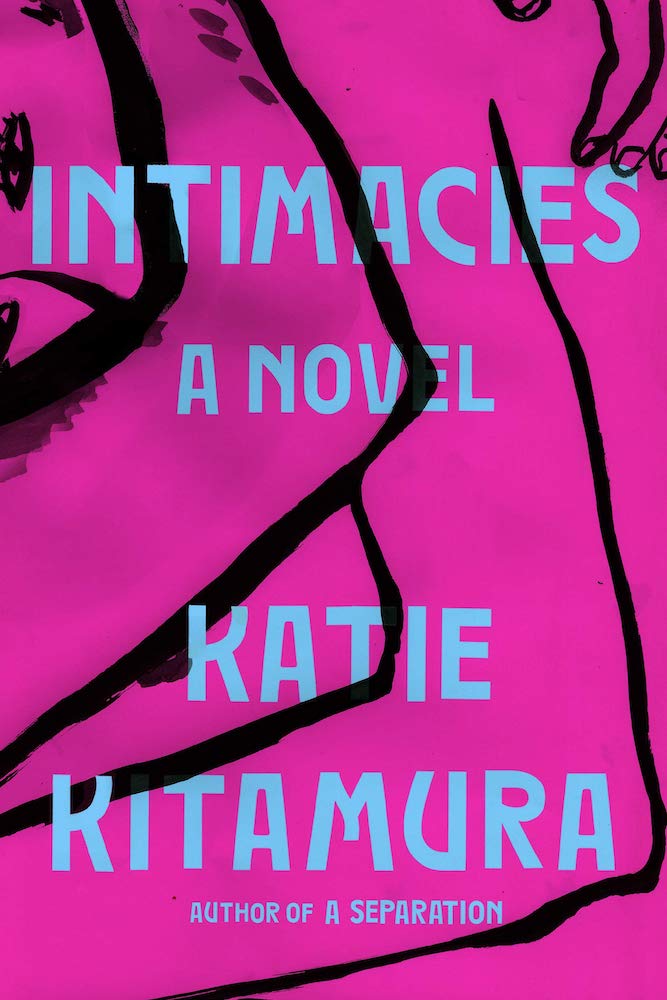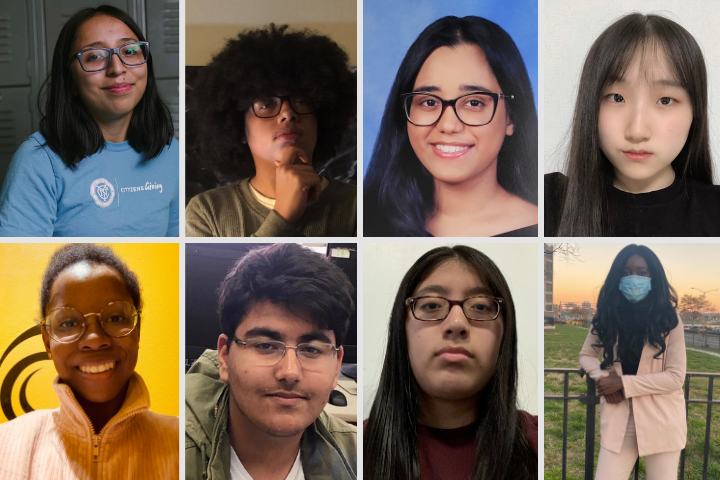The PEN Ten is PEN America’s weekly interview series. This week, Viviane Eng speaks with Katie Kitamura, author of Intimacies (Riverhead Books, 2021).

1. Writing is often a private and intimate process. On July 20, Intimacies also belonged to readers. How did you prepare for that?
It can feel a little like vertigo, in part because you learn a lot about what you’ve written through the process of publication. People see aspects of the work that I’ve (sometimes necessarily) only loosely been aware of. It’s at once edifying and terrifying.
2. What was one of the most surprising things you learned in writing this book? How has your experience bringing Intimacies to life been different from that of your previous releases?
With this book, I wanted to try to open up my writing process. In the past, I’ve had a tendency to share work only when it was very finished. That meant that by the time I was sharing the draft with readers, some of problems in the novel had already ossified in place. This time, I made a conscious decision to share an early and unfinished draft. I wanted to get notes while the novel was still relatively flexible in form.
“While I’ve never returned to a specific place in my writing, the structure of how I write place repeats—the novels are often situated in a single city or location, to which the narrator arrives, and which she must interpret and decode. The hypersensitivity of the newly arrived is something that is useful for me when I’m writing place.”
3. What is your relationship to place and story? Are there specific places you keep going back to in your writing?
There are themes that I return to, ideas that keep circulating in my head and that find their way back onto the page. And while I’ve never returned to a specific place in my writing, the structure of how I write place repeats—the novels are often situated in a single city or location, to which the narrator arrives, and which she must interpret and decode. The hypersensitivity of the newly arrived is something that is useful for me when I’m writing place.
4. The protagonist in Intimacies is a woman who works as an interpreter at the International Court in The Hague, who is enmeshed in a variety of chaotic truths in her personal and professional life daily. Her occupation is so central to the plot of the story,her relationships with others, as well as how she carries herself. When you were beginning to write this book, did the shape of this character initiate the direction of the story, or was it the setting (or something else!) that made you realize you had to tell the story you did?
The events and voice of the novel are always dictated by the character, but it’s true that in this case, the profession of the central character was in place very early. The act of interpretation, as you note, is integral to how she behaves and how she sees the world. But the setting, the events of the novel, the general voice and mood—all of that follows from character.
“One thing I have learned from having friends who are also writers is that you can always see the author in the book. It’s not in the ways people might assume—even with autofiction, a character is never a total representation of the author. But I see the imprint of the author in the book in other ways that are to me more interesting and intimate: in the movement of their mind, in the way of telling a story.”
5. Reading your protagonist’s description of interpretation as almost a theatrical performance—necessitating the communication of tone, affect, and not just words at face value—prompted me to think about the similarities between interpretation and literary translation. You’ve had your work translated into quite a few languages. Do you work closely with your translators to ensure that the emotional cadence is consistent throughout each of your translated editions? Or do you prefer to give your translators autonomy to move in their own directions?
I defer to the translator. I tend to make myself as available as the translator would like. There are many instances where I have virtually no contact with the translator, apart from a handful of clarifications. In other cases, I know my translators quite well. But regardless of the relationship, I think of it as a collaboration—they are coauthors of the book in their language.
 6. You’ve mentioned that the impetus for your book was the 2009 trial of Charles Taylor, the former Liberian president found guilty of aiding and abetting war crimes and crimes against humanity. You noted that, “He was grandiose and monstrous, but so compelling.” What to you makes a character—literary or not—captivating?
6. You’ve mentioned that the impetus for your book was the 2009 trial of Charles Taylor, the former Liberian president found guilty of aiding and abetting war crimes and crimes against humanity. You noted that, “He was grandiose and monstrous, but so compelling.” What to you makes a character—literary or not—captivating?
I’m always interested in characters and situations that provoke an emotion that is uncomfortable or not easily understood. In general, when I read, I become less interested when I think I know how the author wants me to feel. There are exceptions of course, moments when there’s a pleasure in being manipulated on the page. But even then, I’d like that manipulation to lead me to experience an emotion I’m less than fully familiar with.
7. Your third novel, A Separation, is currently being adapted into a film. What has that experience been like? Are there similarities between getting a book ready for translation and getting it adapted for the screen?
There are similarities in the sense that they are both collaborative processes. But they really operate at opposite sides of the spectrum. A script is by nature much more open and subject to change; it needs to be flexible enough to accommodate a multitude of collaborators. Translation is, I think, something of a more cloistered art.
“Teaching has made me a sharper editor and reader of my own work. It’s also exposed me to different kinds of work and different ways of writing. Writing is solitary; workshop is communal. There’s a tension between those two things. But I see the writers in my workshop turn that tension to their advantage.”
8. What is one book or piece of writing you love that readers might not know?
Adalbert Stifter’s Rock Crystal.
9. What other authors are you friends with? How do they help you become a better writer?
One thing I have learned from having friends who are also writers is that you can always see the author in the book. It’s not in the ways people might assume—even with autofiction, a character is never a total representation of the author. But I see the imprint of the author in the book in other ways that are to me more interesting and intimate: in the movement of their mind, in the way of telling a story.
10. In addition to writing, you also teach in the creative writing program at New York University. How has teaching impacted your writing? What’s a lesson—craft related or not—that you always try to impart on to your students?
Teaching has made me a sharper editor and reader of my own work. It’s also exposed me to different kinds of work and different ways of writing. Writing is solitary; workshop is communal. There’s a tension between those two things. But I see the writers in my workshop turn that tension to their advantage, and I’ve seen their projects evolve very rapidly because they have been able to open their writing and themselves to feedback.
Katie Kitamura’s most recent novel, A Separation, was a finalist for the Premio Gregor von Rezzori and a New York Times Notable Book. It was named a best book of the year by over a dozen publications, translated into 16 languages, and is being adapted for film. Her two previous novels, Gone to The Forest and The Longshot, were both finalists for The New York Public Library Young Lions Fiction Award. A recipient of fellowships from the Lannan Foundation and the Santa Maddalena Foundation, Kitamura has written for publications including The New York Times, The Guardian, Granta, BOMB, Triple Canopy, and Frieze. She teaches in the creative writing program at New York University.

